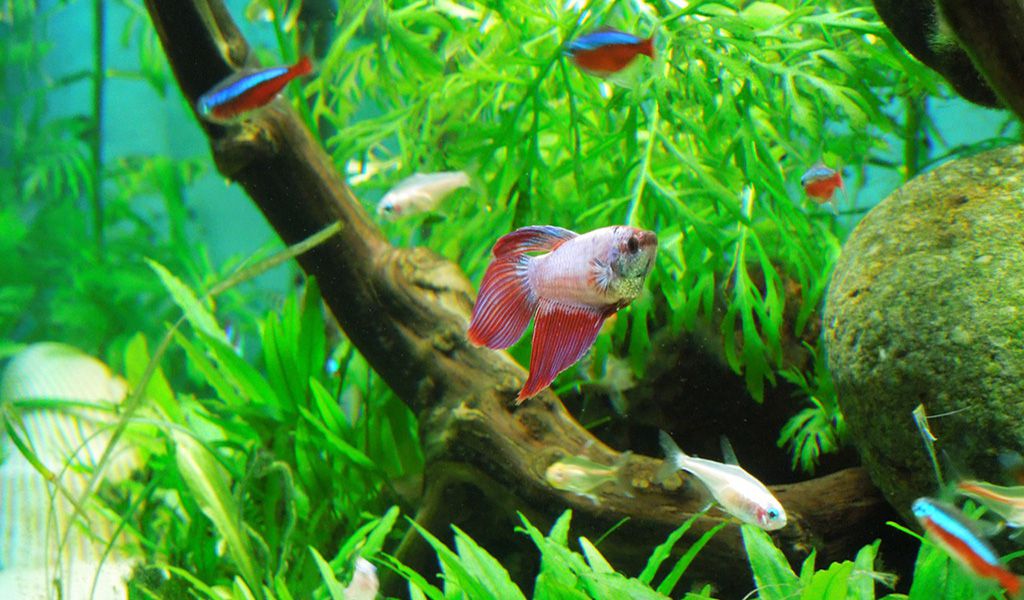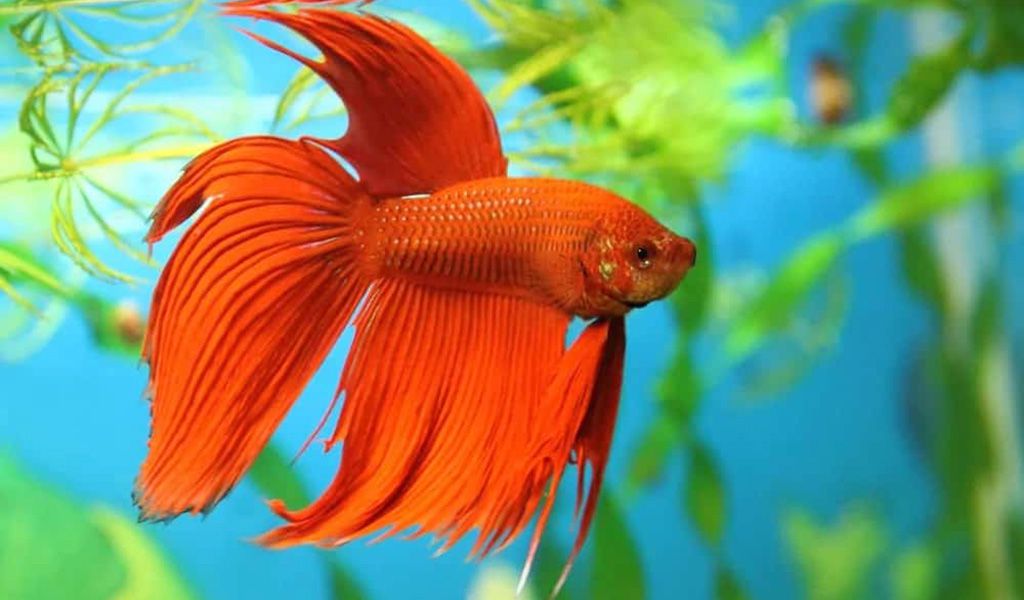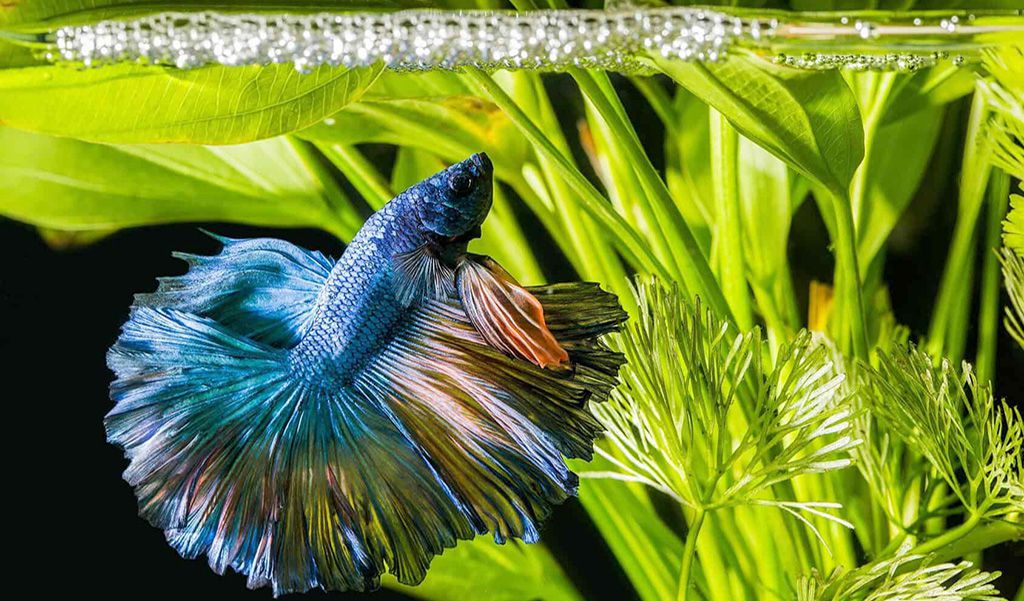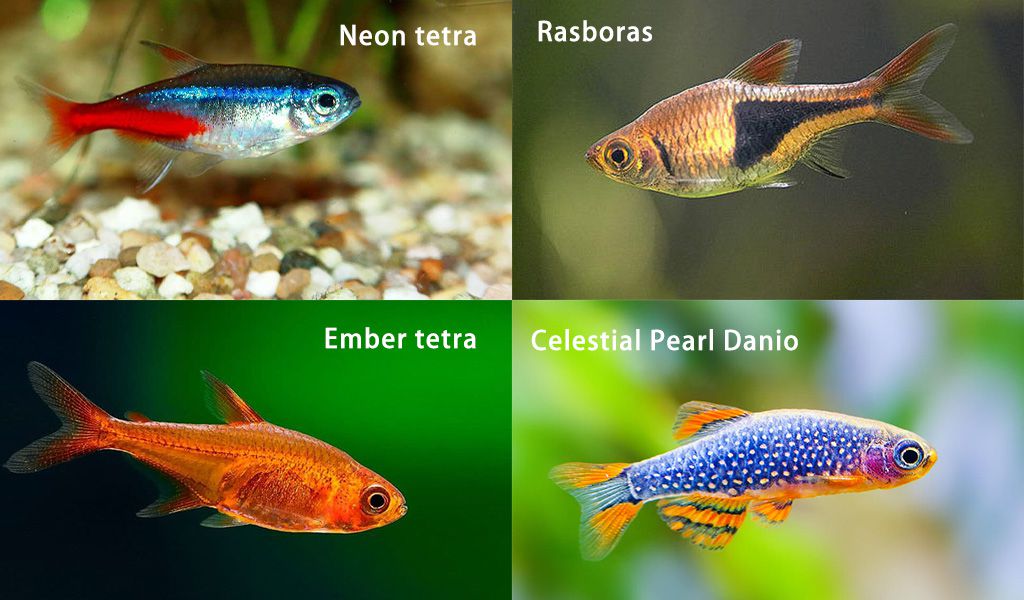Safe Betta Fish Tank Mates
Betta fish, also called Beta, Betta spledens, Chinese fighting fish, Japanese fighting fish, or Siamese fighting fish, are aggressive and instinctively territorial. Thus, you should be cautious when introducing tank mates to a betta fish aquarium. Today, we will get into a more specific discussion about safe betta fish tank mates.
Content Table
Do betta fish need tank mates
Someone says that betta fish should be introduced lastly to a community tank when they are young, then bettas will get along well with other tank mates. While others hold that it depends on bettas’ temperament. Seeing that betta fish are aggressive, adding them last may not be helpful. Actually, sometimes tank mates may cause stressed bettas. Thus, it is not necessary to introduce tank mates to a betta fish tank.
In short, it is recommended to keep only bettas in a fish tank. But you should provide hiding places and plenty of space for betta fish to explore, hide, and rest. Aquatic plants, wood, caves, and rocks can meet the demands. Specifically, java moss, java fern, amazon sword, wisteria, and hornwort are great plants for betta fish.
However, under some circumstances, you can add tank mates to betta fish aquariums. For example, bettas appear lonely and bored. Then adding tank mates help bettas become more active. But you should be prudent while choosing tank mates, or fighting, injury, and death may become common in the betta fish tank.

What fish can live with bettas
If you are passionate about introducing tank mates to a betta fish tank, here are some recommendations, including Rasboras, Neon tetras, Ember tetras, Celestial, Pearl Danios, Gold nugget pleco, khuli loaches, Corydoras, Pygmy Cory catfish, Albino bristle nose pleco. Next, let’s learn more about some of them in this segment.
Before getting started, we are likely to cover some info about betta fish in advance. Then you can compare bettas’ requirements with other fish’ and know why the fish mentioned below are goodish tank mates for bettas.
1. Brief description
Betta fish are tropical freshwater fish, and they enjoy slow-flow water. Tanks with live aquatic plants are friendly for bettas since they can create shades and hiding places for them.
2. Water parameters
- Water temperature: 75-80℉
- pH level: 6.5-8
3. Temperament: aggressive
4. Diet: freeze-dried food/mosquito larvae/brine shrimp/bloodworms/flakes/pellets
5. Minimum tank size: 5 gallons – 8 gallons
Rasboras
1. Brief description
Rasboras are fond of shallow water with plenty of aquatic plants. Besides, they are schooling fish and can get along well with fish of similar size.
2. Water parameters
- Water temperature: 75-80℉
- pH level: 6.8-7.8
3. Temperament: peaceful
4. Diet: daphnia/mosquito larvae/brine shrimp/bloodworms/flakes/pellets
5. Minimum tank size: 10 gallons
Neon tetras
1. Brief description
Neon tetras are one kind of tropical freshwater fish. They need hiding places and like low light. Therefore, you can add some floating plants. Furthermore, neon tetras prefer slow-moving water.
2. Water parameters
- Water temperature: 75-80℉
- pH level: 6.8-7.8
3. Temperament: peaceful
4. Diet: daphnia/larvae/brine shrimp/bloodworms/flakes/pellets
5. Minimum tank size: 10 gallon
Ember tetras
1. Brief description
Ember tetras are freshwater fish. They fancy slow-flowing water. In addition, Aquariums with live aquatic plants, dark substrate, and sufficient room for swimming are ideal to keep ember tetras.
2. Water parameters
- Water temperature: 73-84℉
- pH level: 5-7
3. Temperament: peaceful
4. Diet: daphnia/larvae/brine shrimp/bloodworms/flakes/pellets
5. Minimum tank size: 10 gallon
Celestial Pearl Danios
1. Brief description
Celestial pearl danios are freshwater fish, and they are active. Aside from that, the danios also require slow-flowing or still water, and hiding places. While aquatic plants provide hiding places, the fish will snack on some plants as well.
2. Water parameters
- Water temperature: 72-78℉
- pH level: 6.5-8.4
3. Temperament: peaceful
4. Diet: daphnia/larvae/brine shrimp/bloodworms/flakes/pellets
5. Minimum tank size: 10 gallon
In addition to some decent tank mates for betta fish, some fish should not be kept with bettas, such as goldfish, cichlids, and gouramis.
Choose the right tank mate for betta fish
When it comes to tank mates for the betta, how to choose the right one? Exactly, you should follow some rules.
Fish requirements
The tank mates should be tropical freshwater fish. Cold-water fish are not excellent choices. It means that tank mates share the same water conditions and parameters demand as betta fish in your aquarium. Also, fish requiring the same or similar diet is an excellent option. It makes sense in preventing food waste and saving money in the long term.

Body color
Actually, male and female bettas will fight with each other as well. Thus, fish species with bright colors and large flowing fins should be avoided. Because bettas may mistake them for other bettas, and it would cause fighting and injury.
Temperament
As bettas are aggressive, aggressive tank mates would pose threats to bettas, nipping bettas’ fins for instance. In this way, they will definitely fight with each other. But it will lead to injury or death in the end. Consequently, peaceful ones are greater options for betta fish tanks.
How to introduce tank mates to betta fish tank
After determining the tank mates, it is time to introduce them to the betta fish tank. This part will share procedures to introduce the tank mates to a betta tank and cover some maintenance tips.
Steps to introduce tank mates to a betta fish tank
1. Determine the quantity of tank mate: as the fish tank space is limited, it is necessary to determine how many fish to add. Otherwise, overstock would cause health problems. For instance, if your betta fish tank is 5 gallons, it is not recommended to introduce tank mates.
2. Quarantine new fish: before introducing the tank mates to betta, you should isolate and observe the new fish for about 72 hours.
3. Take betta fish out of the fish tank, and stock it in another tank or container temporarily.
4. Acclimate new fish: introduce the tank mates to acclimate your betta fish tank.
5. Remove betta fish back: after observing, you can remove the betta fish back to the tank.

Maintenance tips
1. Keep the great water quality
Make sure to maintain regular water changes to keep the water clean. Moreover, a gravel vacuum will make sense in removing waste and debris. Furthermore, a betta fish tank filter is also helpful. The filter can improve the dissolved oxygen level and facilitate beneficial bacteria cultivation.
2. Provide adequate hiding places
As we have mentioned above, betta fish and most appropriate tank mates prefer hiding places. Consequently, you can use rocks, wood, or aquatic plants to create adequate hiding places for them. But do not forget to leave enough space for them to swim and explore.
3. Ensure sufficient oxygen
Low oxygen levels will lead to plant and fish deaths. Accordingly, it is essential to add an air pump to the betta fish tank. An air pump can oxygenate the water, while also expelling excess carbon dioxide.
Final words
Aside from all mentioned above, if you want to learn more about betta fish, the kinds of betta fish, or ways to keep betta fish happy, you can go to What Is a Good Way to Keep Betta Fish Happy. By the way, welcome to share your ideas in the comment. Finally, thanks for your reading!

